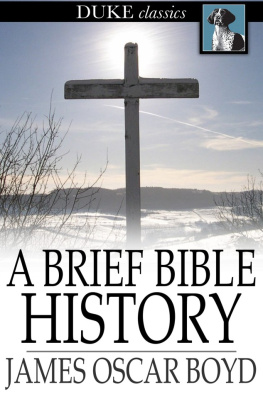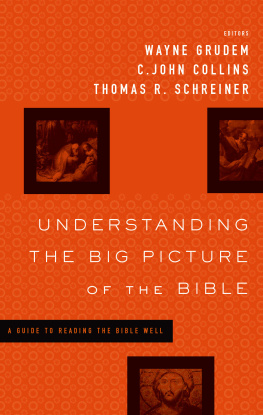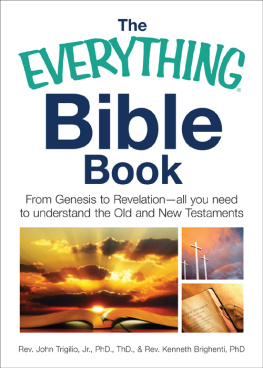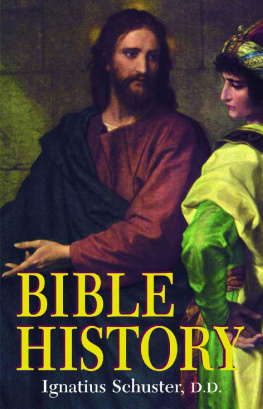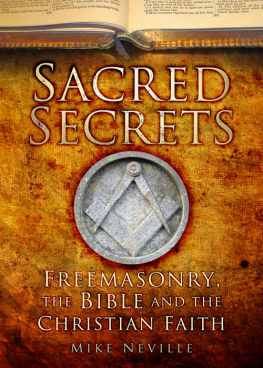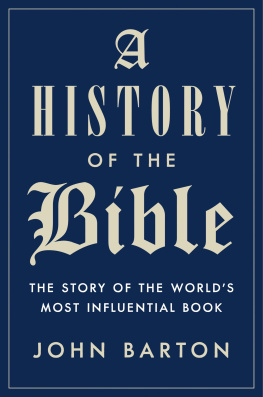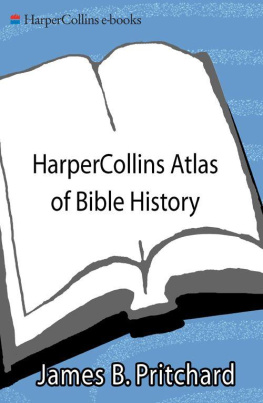A BRIEF BIBLE HISTORY
A SURVEY OF THE OLD AND NEW TESTAMENTS
* * *
JAMES OSCAR BOYD
JOHN GRESHAM MACHEN
*
A Brief Bible History
A Survey of the Old and New Testaments
First published in 1922
ISBN 978-1-62013-517-4
Duke Classics
2014 Duke Classics and its licensors. All rights reserved.
While every effort has been used to ensure the accuracy and reliability of the information contained in this edition, Duke Classics does not assume liability or responsibility for any errors or omissions in this book. Duke Classics does not accept responsibility for loss suffered as a result of reliance upon the accuracy or currency of information contained in this book.
Contents
*
Introduction
*
This book surveys the history of God's redeeming grace. It reviewsOld Testament history, disclosing the stream of God's redeemingpurposes flowing down through the older times. It reviews NewTestament history, disclosing the broadening and deepening of thatpurpose for us men and for mankind in our Lord and Saviour JesusChrist and his Church.
The chapters included in this book appear also as a part of Teachingthe Teacher, a First Book in Teacher Training, and are issued inthis form to supply the demand for a brief Bible history, forpopular reading.
HAROLD MCA. ROBINSON.
SECTION I - THE DEVELOPMENT OF THE CHURCH IN OLD TESTAMENT TIMES
*
By James Oscar Boyd, Ph.D., D.D.
Lesson I - Before Abraham
*
Genesis, Chapters 1 to 11
That part of the globe which comes within the view of the OldTestament is mostly the region, about fifteen hundred miles square,lying in the southwestern part of Asia, the southeastern part ofEurope, and the northeastern part of Africa. This is where the threecontinents of the Eastern Hemisphere come together. Roughly speakingit includes Asia Minor, Mesopotamia, Syria, Palestine, Arabia, andEgypt, with a fringe of other lands and islands stretching beyondthem.
The heart of all this territory is that little strip of land, lyingbetween the desert on the east and the Mediterranean Sea on thewest, known as Syria and Palestine. It is some four hundred milesin length and varies from fifty to one hundred miles in width. Ithas been well called "the bridge of the world," for like a bridge itjoins the largest continent, Asia, to the next largest, Africa. Andas Palestine binds the lands together, so the famous Suez Canal atits southern end now binds the seas together. To-day, therefore, asin all the past, this spot is the crossroads of the nations.
Palestine has long been called the "Holy Land," because it is thescene of most of the Bible story. Yet it would be a mistake tosuppose that that Bible story is limited to Palestine. The bookof Genesis does not introduce the reader to Canaan (as it callsPalestine) until he has reached its twelfth chapter. There is asense in which the history of God's people begins with Abraham, andit was Abraham who went at God's bidding into the land of Canaan.The story of Abraham will be taken up in the second lesson; but theBible puts before the life of Abraham all the familiar story thatlies in the first eleven chapters of Genesis and that forms thebackground for the figures of Abraham and his descendants.
The location of this background is the basin of the Tigris andEuphrates Rivers. These two streams are mentioned in Gen. 2:14 (theTigris under the form "Hiddekel") as the third and fourth "heads"of the "river that went out of Eden to water the garden" in whichour first parents dwelt. The region is at the southern end of whatis now called Mesopotamia. At the northern end of this river basintowers the superb mountain known as Mount Ararat. But the "mountainsof Ararat," mentioned in Gen. 8:4 as the place where Noah's arkrested when the waters of the Flood had subsided, are no particularpeak, but are the highlands of Kurdistan, which in ancient timeswere called Urartu (Ararat). Between Kurdistan on the north and thePersian Gulf on the south, the highlands of Persia on the east andthe great Syrian Desert on the west, occurred the earliest drama ofhuman history.
That drama was a tragedy. It became a tragedy because of man's sin.The wonderful poem of creation in Gen., ch. 1, has for the refrainof its six stanzas, "God saw that it was good." Best of all was man,the last and highest of God's worksman, made in "his own image,"after his likeness. On the sixth "day," when God made man, God saidof his work, "Behold, it was very good." More than that: throughthe kindness of God man is put in a "garden," and is ordered to"dress it and to keep it." Ch. 2:15. Adam sees his superiority tothe rest of the animal kingdom, over which he is given "dominion."He is thus prepared to appreciate the woman as a helpmeet for him,so that the unit of society may ever mean for him one man and onewoman with their children. Adam is also warned against sin as havingdisobedience for its root and death as its result.
All this prepares us to understand the temptation, the miserablefall of the woman and the man, their terror, shame, and punishment.Ch. 3. And we are not surprised to see the unfolding of sin in thelife of their descendants, beginning with Cain's murder of Abel, andgrowing until God sweeps all away in a universal deluge. Chs. 4, 6.
God's tender love for his foolish, rebellious creatures "will notlet them go." At the gates of the garden from which their sin hasforever banished them, God already declares his purpose to "bruise"the head of that serpent, Rom. 16:20, who had brought "sin intothe world and death by sin," Gen. 3:15. Through the "seed of thewoman"a "Son of man" of some future daysinful man can escapethe death he has brought upon himself. And from Seth, the child"appointed instead of" murdered Abel, a line of men descends, whobelieve this promise of God. Ch. 5. In Enoch we find them "walkingwith God," v. 24, in a fellowship that seemed lost when paradisewas lost. In Lamech we find them hoping with each new generationthat God's curse will be at length removed. V. 29. And in Noah wefind them obedient to a positive command of God, ch. 6:22, as Adamhad been disobedient.
In the Flood, Noah and his family of eight were the only persons tosurvive. When they had come from the ark after the Flood, God gavethem the promise that he would not again wipe out "all flesh." Ch.9:11. But after it appeared that God's judgments had not made themfear him, God was just as angry with Noah's descendants as he hadbeen with the men before the Flood. Pride led them to build a towerto be a rallying point for their worship of self. But God showedthem that men cannot long work together with a sinful purpose astheir common object; he broke up their unity in sin by confusingtheir speech, ch. 11, and scattering them over the earth, ch. 10.This second disappointment found its brighter side in the line ofmen descended from Noah through Shem, ch. 11:10, who also cherishedGod's promises. And the last stroke of the writer's pen in theseearliest chapters of the Bible introduces the reader to the familyof Terah in that line of Shem, and thus prepares the way for acloser acquaintance with Terah's son, Abraham, "the friend of God."
QUESTIONS ON LESSON I
1. About how large is the world of the Old Testament, and where does it lie?
2. What special importance has Palestine because of its position?
3. How much of the story in Genesis is told before we are carried to Palestine?

